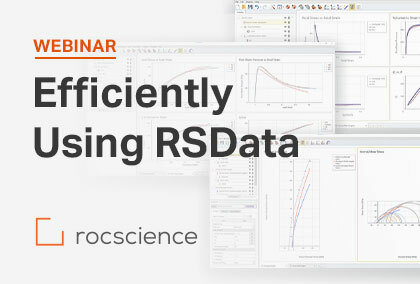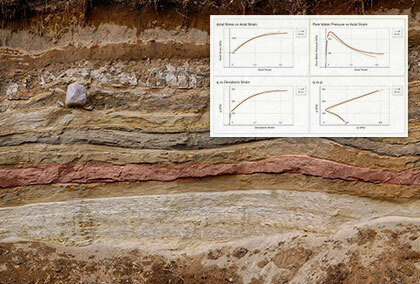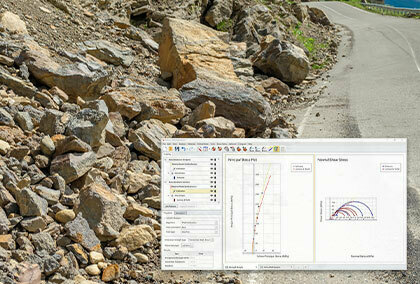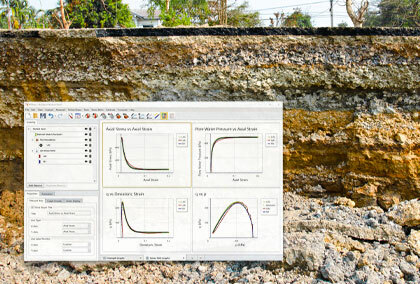Getting the Best out of Your Data with RSData
by Reginald Hammah, Ph.D.
“If you put garbage in a computer, nothing comes out but garbage. But this garbage, having passed through a very expensive machine, is somehow ennobled, and none dare criticize it.” - Rory Bremner
Introduction
Everyone talks about the insights geotechnical modelling offers. This is for good reason – modelling is a valuable tool available to today’s engineers for understanding the response of grounds and geotechnical structures to loading. However, few talk about the quality of the data upon which these models are built. Many of us forget the timeless GIGO maxim to mean “garbage in, garbage out.” We instead interpret GIGO as “garbage in, gospel out!”
Computers process what they are given, and models can be no more valuable than the quality of input data built on. At its best, bad input data is inconsequential. At its worst, bad inputs lead to costly engineering errors and decision making; we are likely to make the wrong choices if we base our decisions on insufficient information.
Rocscience firmly believes that geotechnical engineers should treat input data quality as integral to successful modelling. Good data quality leads to better decision-making and greater confidence in the decisions made. Good data decreases risk and can result in consistent improvements in results. The purpose of this short article is to explain how RSData (and its predecessor RocData) contributes to generating quality input data and choosing appropriate strength and constitutive models for programs such as RS2, RS3, and Settle3D.
RocData – Step 1: Making the Best out of Laboratory Data
Geotechnical engineering generally suffers from a lack of input data on soil and rock mass properties. This situation can severely impair the capabilities of our powerful constitutive models and software tools. To help improve the data situation, Rocscience first developed RocData, a program that provided tools for readily fitting four of the most widely used and accepted strength models for soils and rock to laboratory data. The strength models were namely the Generalized Hoek-Brown, Mohr-Coulomb, Barton-Bandis, and Power Curve failure criteria. These models were generally geared towards rock mechanics.
RocData could also be used to assess the impact of different input parameters on the strength envelopes used in limit equilibrium and numerical analysis software such as Slide2, Slide3, RS2, and RS3. The program was beneficial at the preliminary design stages when little data was available.
Although RocData’s features (which enabled users to visualize the effects of input parameter changes on failure envelopes) were advantageous, they were far from complete. For example, the program did not allow users to visualize stress paths adequately – the successive stress states in a test soil specimen during loading or unloading. Stress histories can be briefly described with stress paths, and visualization of stress paths can contribute to obtaining a better understanding of complex soil behaviours.
RSData – Step 2: RocData on Steroids
In 2020, Rocscience invested heavily in developing an upgrade on RocData that addressed the weaknesses mentioned above (and others) and provided enhanced interface and visualization features. RSData was the outcome.
The new program can fit laboratory data to a more extensive list of failure criteria. In addition, the new stress path feature of RSData allows users to examine the complex stress-strain behaviour of materials from the start of loading to failure and post-failure.
The software can, for example, allow users to visualize changes in the volumetric behaviour resulting from dilation parameter values. It can also be used to calibrate other physical parameters of soil models such as NORSAND.
Even for experienced geotechnical engineers, understanding the complex nonlinear responses of some clays and sands to loading can be challenging. One of the best features of RSData – the ability to animate nonlinear and hardening/softening behaviours of materials – helps overcome this problem. The animation feature allows users to track how such materials respond to various loading paths.
Final Thoughts
RSData has arrived with several features. Two of them are
- To help geotechnical engineers maximize the quality information they can glean from laboratory testing of soil and rock materials, and
- To help them better understand the material responses they are prescribing based on their selected input parameters
These two features alone can significantly improve the quality of our geotechnical models. Why don't you give the program a try?



